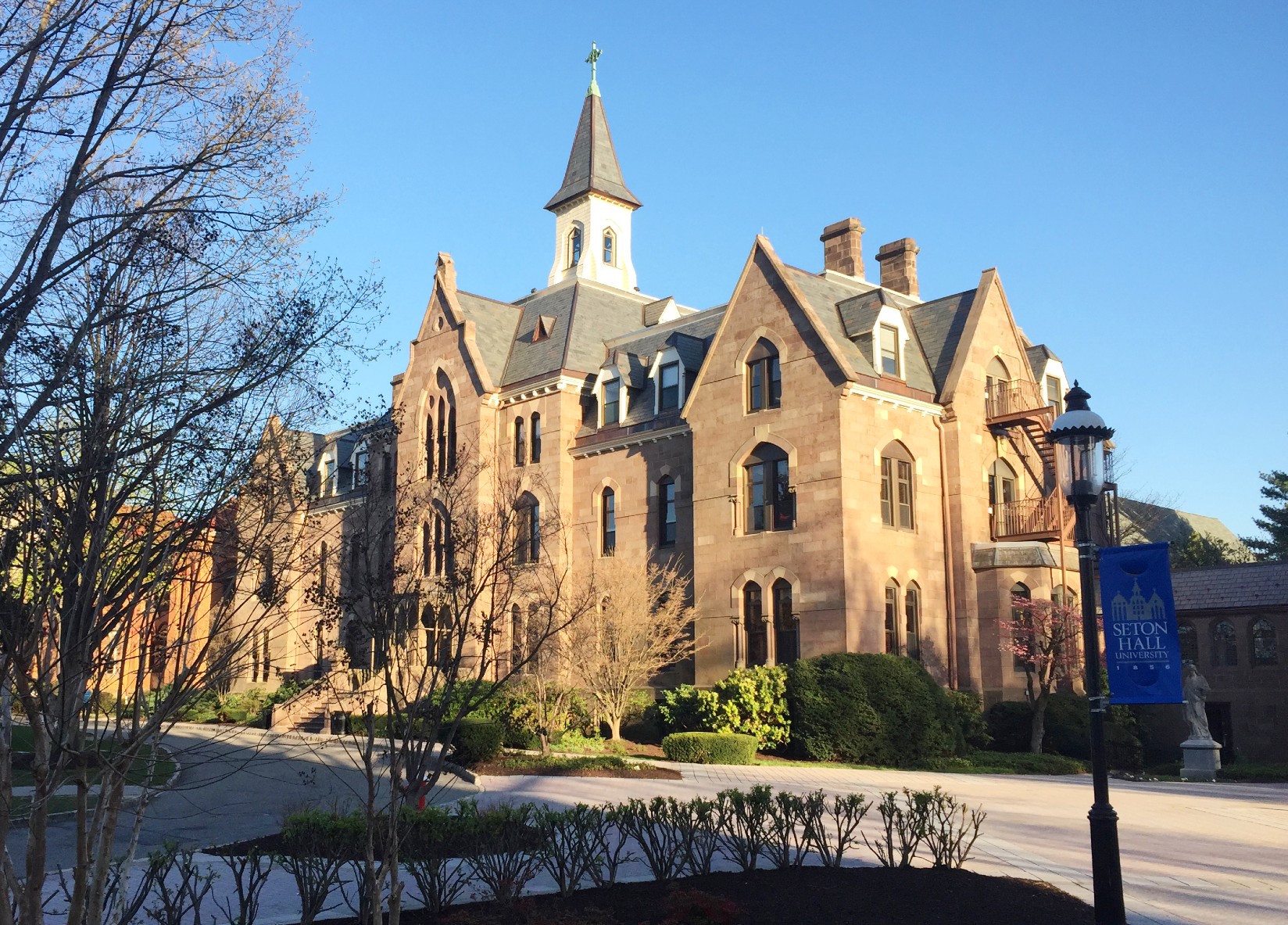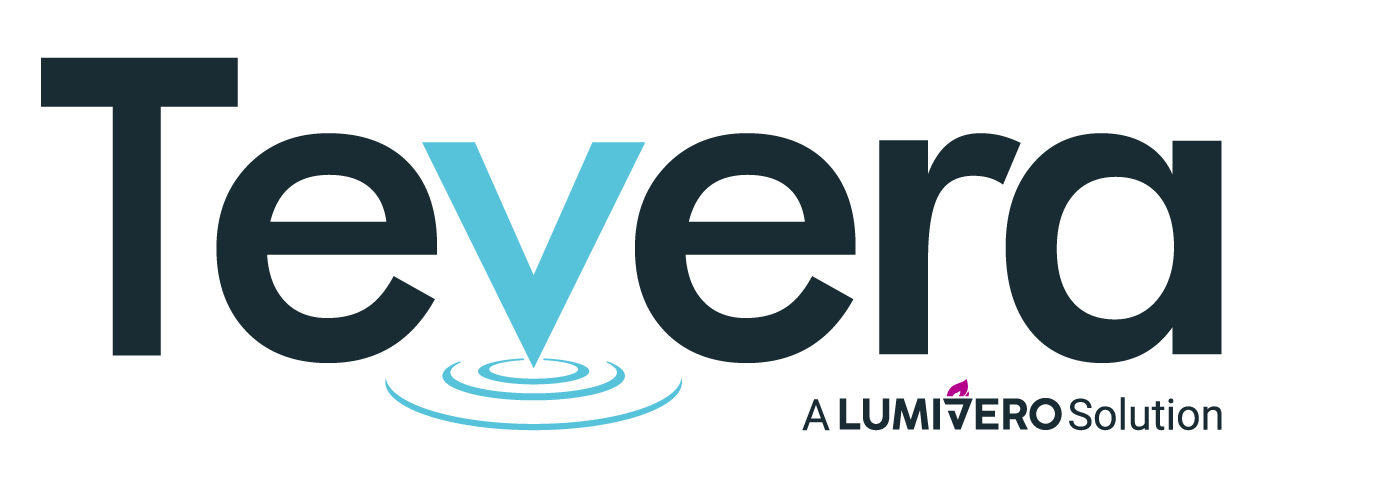Executive Summary
Seton Hall University’s Mary Landriau, Social Work B.A. Program Field Director, shares what coordinating field experiences was like before and after her program took on Tevera, and how she achieved a 50% reduction in the time it takes managing key partner relationships and securing placements for students.
Saving Time with Tevera: From Days to Minutes
“We had no management system for field experiences at all. It was just me and myself sending emails between agencies and students: back and forth, back and forth. That’s clearly a problem!”
-Mary Landriau
Seton Hall University’s Mary Landriau recounts how, prior to using Tevera, communication was handled entirely by email and agency information was often siloed within paperwork or spreadsheets that she used to make sense of the vast network of field agency partners Seton Hall maintains for its students’ placement experiences.
To place students with agencies that would be most effective for them, she had to carry out an extensive and time-consuming process, interviewing students to understand their goals and preferences and then pairing these preferences with agencies as best she could based on the on-hand information that she could maintain about agencies.
Once she had connected a student with their agency, even after the agency had accepted that student as a supervisee, it could take days to weeks to complete affiliation agreements so that students could begin their placement experiences. With everything having been on paper, drafts needed to be written up each time, approved, converted to digital forms, sent to the agency, awaited for signature and return, downloaded, signed again, and then filed.
“I had a spreadsheet to keep track of things, and I would have to ensure that I checked things off as they handed things in. Though our program is smaller, that’s still 100 or so students to keep track of. Nothing was automated, so quite frankly, it was hard for me to just keep up.”
-Mary Landriau
This all changed in 2019, however.
Following the transition to Tevera, Mary says this about how much time she saves:
“I mean, it feels like 95%. Really! Though it’s probably not that much, it’s definitely significant. I’d say more than 50% at least!”
-Mary Landriau
The biggest time saver, though, Mary attributes to the digital signature. Without this electronic process built into the placement processes and paperwork, she is uncertain how Seton Hall would have fared during the height of the Covid-19 Pandemic where necessary safety precautions would have literally halted their students’ progress under the previous structure. Thankfully, Seton Hall and its programs are stronger than ever and continuing to grow!
Key Features of Tevera Used by Seton Hall
Let’s take a look at two key features of Tevera that Mary and the Seton Hall B.A. in Social Work used to streamline and support their program:
One challenge Mary faced previously was maintaining filing systems with the information about key partners and agencies. With Tevera, she was able to create site profiles where all of this information is stored. No more sorting through emails or spreadsheets for what services an agency provides, which supervisors and students are working there, or even basic contact information.
Another challenge that Mary points out is that placement processes can be time, paper, and frustration heavy. With Tevera’s digital platform, she was able to say goodbye to sending paper documents, digital scans, and email attachments that take days to finalize. Instead, she was able to build placement processes that are housed within Tevera, empowering her team to optimize and support their program’s agency placement and coordination.
“It looks the way we wanted it to look and we can change as we grow. We don’t have to redevelop things and that saves time. Year two, three, four, five with Tevera–they’re all going to be easy.”
-Mary Landriau
From Siloed to Centralized Data – A Driver for Student Success
Mary and her team continue to see Tevera’s impact when used by administrators and faculty to ensure students are successfully progressing through their programs.
For example, Mary needs to help students stay accountable and up-to-pace with programmatic expectations and outcomes. In order to provide support, administrators need to be able monitor student progress.
“I’ve said this a lot, but I had a spreadsheet. Students would contact me and I’d have to check ‘yes, they did this’ or ‘no, they didn’t do this’. It was on me to not only help the students but to keep the data updated.”
-Mary Landriau
Keeping track of student progress, such as assignment completion, hours tracking, or placement processes, had been a challenge because so much time was already spent documenting this information manually. Beyond that, it was another struggle entirely to track any “indicators” that might predict an individual student’s struggles and needs in time to intervene and get them back on track.
Compounding this issue was the problem of siloed information that often existed in several locations, rather than one accessible, centralized platform. Faculty, sites, and students all relied on Mary as the source of truth: an overwhelming responsibility. Mary has flipped this problem on its head with Tevera, where not only can she monitor student progress with one click, so can the other faculty and staff in the program that relied on her for this information.
“One of the really great things about Tevera is that, at any given point, you can go in and see where the student is. Before this, you wouldn’t always be aware if a student was behind, and if they were, the problem had become much larger to fix. Now, the other faculty and I can stay ahead and make sure they’re on target.”
-Mary Landriau
Mary also points out that, though she had an organization system in place, accessibility to current and historical documentation for students and their sites and program paperwork had been a major concern.
Students need access to their placement information, past assignments, and evaluations from their time in school when pursuing state licensure. This burden used to fall on Mary who would keep necessary files for students for years past their graduation. When students reached out, she’d have to sift through years of paperwork, send the document in paper or by digital scan, and confirm that the student received it.
“We still have hundreds of students’ files from before Tevera because of final evaluations and other documents they need after. If someone asks for something, I have to dig through all the paper.”
-Mary Landriau
Mary has toppled this issue too by taking advantage of Tevera’s lifetime-access for students to integrate the tasks and assignments that may be valuable to them, after graduation, into Tevera’s assignment workspace.
This workspace allows students to complete tasks including time reports, evaluations, and other necessary documentation in their program. When students graduate and become an alumni, their Tevera access continues, and they maintain ownership over their own files and history within the platform. The best part: both Mary and students now have continued access to that documentation.
And Mary has been able to take back more of her own office space too:
“I can’t wait to get rid of that filing cabinet. With Tevera, students bring everything with them and can access things whenever they want. That’s huge.”
-Mary Landriau
Features Used to Ensure Student Success
Let’s look at a few more Tevera features that allow Mary to proactively ensure student success:
With Tevera’s ability to organize students into classes or cohorts, you can assign tasks which are then monitored in a grid system where you can track completion needs based on status indicators such as tasks in-progress, tasks awaiting admin input, and tasks completed.
-
Time Tracking and Monitoring
Not only does Tevera provide the ability for students to track their hours in comprehensive time tracks, you and your students can also monitor their service hours with time approval, time reporting, and the track progress widget.
-
The Alumni Experience
With continued access to Tevera, alumni can track and report hours for state licensure applications, and they’ll retain access to all of their past placement information, assignments, and evaluations.
The Final Take
In the words of Mary, “Tevera really has been incredible.”
Take her word for it: Tevera’s industry-leading features will help your program reach new heights by saving you time, providing data-driven insights, and supporting student success.
SOLUTIONS
RELATED POSTS
PRODUCT OVERVIEW
See how Tevera can elevate your program.
Executive Summary
Seton Hall University’s Mary Landriau, Social Work B.A. Program Field Director, shares what coordinating field experiences was like before and after her program took on Tevera, and how she achieved a 50% reduction in the time it takes managing key partner relationships and securing placements for students.
Saving Time with Tevera: From Days to Minutes
“We had no management system for field experiences at all. It was just me and myself sending emails between agencies and students: back and forth, back and forth. That’s clearly a problem!”
-Mary Landriau
Seton Hall University’s Mary Landriau recounts how, prior to using Tevera, communication was handled entirely by email and agency information was often siloed within paperwork or spreadsheets that she used to make sense of the vast network of field agency partners Seton Hall maintains for its students’ placement experiences.
To place students with agencies that would be most effective for them, she had to carry out an extensive and time-consuming process, interviewing students to understand their goals and preferences and then pairing these preferences with agencies as best she could based on the on-hand information that she could maintain about agencies.
Once she had connected a student with their agency, even after the agency had accepted that student as a supervisee, it could take days to weeks to complete affiliation agreements so that students could begin their placement experiences. With everything having been on paper, drafts needed to be written up each time, approved, converted to digital forms, sent to the agency, awaited for signature and return, downloaded, signed again, and then filed.
“I had a spreadsheet to keep track of things, and I would have to ensure that I checked things off as they handed things in. Though our program is smaller, that’s still 100 or so students to keep track of. Nothing was automated, so quite frankly, it was hard for me to just keep up.”
-Mary Landriau
This all changed in 2019, however.
Following the transition to Tevera, Mary says this about how much time she saves:
“I mean, it feels like 95%. Really! Though it’s probably not that much, it’s definitely significant. I’d say more than 50% at least!”
-Mary Landriau
The biggest time saver, though, Mary attributes to the digital signature. Without this electronic process built into the placement processes and paperwork, she is uncertain how Seton Hall would have fared during the height of the Covid-19 Pandemic where necessary safety precautions would have literally halted their students’ progress under the previous structure. Thankfully, Seton Hall and its programs are stronger than ever and continuing to grow!
Key Features of Tevera Used by Seton Hall
Let’s take a look at two key features of Tevera that Mary and the Seton Hall B.A. in Social Work used to streamline and support their program:
One challenge Mary faced previously was maintaining filing systems with the information about key partners and agencies. With Tevera, she was able to create site profiles where all of this information is stored. No more sorting through emails or spreadsheets for what services an agency provides, which supervisors and students are working there, or even basic contact information.
Another challenge that Mary points out is that placement processes can be time, paper, and frustration heavy. With Tevera’s digital platform, she was able to say goodbye to sending paper documents, digital scans, and email attachments that take days to finalize. Instead, she was able to build placement processes that are housed within Tevera, empowering her team to optimize and support their program’s agency placement and coordination.
“It looks the way we wanted it to look and we can change as we grow. We don’t have to redevelop things and that saves time. Year two, three, four, five with Tevera–they’re all going to be easy.”
-Mary Landriau
From Siloed to Centralized Data – A Driver for Student Success
Mary and her team continue to see Tevera’s impact when used by administrators and faculty to ensure students are successfully progressing through their programs.
For example, Mary needs to help students stay accountable and up-to-pace with programmatic expectations and outcomes. In order to provide support, administrators need to be able monitor student progress.
“I’ve said this a lot, but I had a spreadsheet. Students would contact me and I’d have to check ‘yes, they did this’ or ‘no, they didn’t do this’. It was on me to not only help the students but to keep the data updated.”
-Mary Landriau
Keeping track of student progress, such as assignment completion, hours tracking, or placement processes, had been a challenge because so much time was already spent documenting this information manually. Beyond that, it was another struggle entirely to track any “indicators” that might predict an individual student’s struggles and needs in time to intervene and get them back on track.
Compounding this issue was the problem of siloed information that often existed in several locations, rather than one accessible, centralized platform. Faculty, sites, and students all relied on Mary as the source of truth: an overwhelming responsibility. Mary has flipped this problem on its head with Tevera, where not only can she monitor student progress with one click, so can the other faculty and staff in the program that relied on her for this information.
“One of the really great things about Tevera is that, at any given point, you can go in and see where the student is. Before this, you wouldn’t always be aware if a student was behind, and if they were, the problem had become much larger to fix. Now, the other faculty and I can stay ahead and make sure they’re on target.”
-Mary Landriau
Mary also points out that, though she had an organization system in place, accessibility to current and historical documentation for students and their sites and program paperwork had been a major concern.
Students need access to their placement information, past assignments, and evaluations from their time in school when pursuing state licensure. This burden used to fall on Mary who would keep necessary files for students for years past their graduation. When students reached out, she’d have to sift through years of paperwork, send the document in paper or by digital scan, and confirm that the student received it.
“We still have hundreds of students’ files from before Tevera because of final evaluations and other documents they need after. If someone asks for something, I have to dig through all the paper.”
-Mary Landriau
Mary has toppled this issue too by taking advantage of Tevera’s lifetime-access for students to integrate the tasks and assignments that may be valuable to them, after graduation, into Tevera’s assignment workspace.
This workspace allows students to complete tasks including time reports, evaluations, and other necessary documentation in their program. When students graduate and become an alumni, their Tevera access continues, and they maintain ownership over their own files and history within the platform. The best part: both Mary and students now have continued access to that documentation.
And Mary has been able to take back more of her own office space too:
“I can’t wait to get rid of that filing cabinet. With Tevera, students bring everything with them and can access things whenever they want. That’s huge.”
-Mary Landriau
Features Used to Ensure Student Success
Let’s look at a few more Tevera features that allow Mary to proactively ensure student success:
With Tevera’s ability to organize students into classes or cohorts, you can assign tasks which are then monitored in a grid system where you can track completion needs based on status indicators such as tasks in-progress, tasks awaiting admin input, and tasks completed.
-
Time Tracking and Monitoring
Not only does Tevera provide the ability for students to track their hours in comprehensive time tracks, you and your students can also monitor their service hours with time approval, time reporting, and the track progress widget.
-
The Alumni Experience
With continued access to Tevera, alumni can track and report hours for state licensure applications, and they’ll retain access to all of their past placement information, assignments, and evaluations.
The Final Take
In the words of Mary, “Tevera really has been incredible.”
Take her word for it: Tevera’s industry-leading features will help your program reach new heights by saving you time, providing data-driven insights, and supporting student success.
Executive Summary
Seton Hall University’s Mary Landriau, Social Work B.A. Program Field Director, shares what coordinating field experiences was like before and after her program took on Tevera, and how she achieved a 50% reduction in the time it takes managing key partner relationships and securing placements for students.
Saving Time with Tevera: From Days to Minutes
“We had no management system for field experiences at all. It was just me and myself sending emails between agencies and students: back and forth, back and forth. That’s clearly a problem!”
-Mary Landriau
Seton Hall University’s Mary Landriau recounts how, prior to using Tevera, communication was handled entirely by email and agency information was often siloed within paperwork or spreadsheets that she used to make sense of the vast network of field agency partners Seton Hall maintains for its students’ placement experiences.
To place students with agencies that would be most effective for them, she had to carry out an extensive and time-consuming process, interviewing students to understand their goals and preferences and then pairing these preferences with agencies as best she could based on the on-hand information that she could maintain about agencies.
Once she had connected a student with their agency, even after the agency had accepted that student as a supervisee, it could take days to weeks to complete affiliation agreements so that students could begin their placement experiences. With everything having been on paper, drafts needed to be written up each time, approved, converted to digital forms, sent to the agency, awaited for signature and return, downloaded, signed again, and then filed.
“I had a spreadsheet to keep track of things, and I would have to ensure that I checked things off as they handed things in. Though our program is smaller, that’s still 100 or so students to keep track of. Nothing was automated, so quite frankly, it was hard for me to just keep up.”
-Mary Landriau
This all changed in 2019, however.
Following the transition to Tevera, Mary says this about how much time she saves:
“I mean, it feels like 95%. Really! Though it’s probably not that much, it’s definitely significant. I’d say more than 50% at least!”
-Mary Landriau
The biggest time saver, though, Mary attributes to the digital signature. Without this electronic process built into the placement processes and paperwork, she is uncertain how Seton Hall would have fared during the height of the Covid-19 Pandemic where necessary safety precautions would have literally halted their students’ progress under the previous structure. Thankfully, Seton Hall and its programs are stronger than ever and continuing to grow!
Key Features of Tevera Used by Seton Hall
Let’s take a look at two key features of Tevera that Mary and the Seton Hall B.A. in Social Work used to streamline and support their program:
One challenge Mary faced previously was maintaining filing systems with the information about key partners and agencies. With Tevera, she was able to create site profiles where all of this information is stored. No more sorting through emails or spreadsheets for what services an agency provides, which supervisors and students are working there, or even basic contact information.
Another challenge that Mary points out is that placement processes can be time, paper, and frustration heavy. With Tevera’s digital platform, she was able to say goodbye to sending paper documents, digital scans, and email attachments that take days to finalize. Instead, she was able to build placement processes that are housed within Tevera, empowering her team to optimize and support their program’s agency placement and coordination.
“It looks the way we wanted it to look and we can change as we grow. We don’t have to redevelop things and that saves time. Year two, three, four, five with Tevera–they’re all going to be easy.”
-Mary Landriau
From Siloed to Centralized Data – A Driver for Student Success
Mary and her team continue to see Tevera’s impact when used by administrators and faculty to ensure students are successfully progressing through their programs.
For example, Mary needs to help students stay accountable and up-to-pace with programmatic expectations and outcomes. In order to provide support, administrators need to be able monitor student progress.
“I’ve said this a lot, but I had a spreadsheet. Students would contact me and I’d have to check ‘yes, they did this’ or ‘no, they didn’t do this’. It was on me to not only help the students but to keep the data updated.”
-Mary Landriau
Keeping track of student progress, such as assignment completion, hours tracking, or placement processes, had been a challenge because so much time was already spent documenting this information manually. Beyond that, it was another struggle entirely to track any “indicators” that might predict an individual student’s struggles and needs in time to intervene and get them back on track.
Compounding this issue was the problem of siloed information that often existed in several locations, rather than one accessible, centralized platform. Faculty, sites, and students all relied on Mary as the source of truth: an overwhelming responsibility. Mary has flipped this problem on its head with Tevera, where not only can she monitor student progress with one click, so can the other faculty and staff in the program that relied on her for this information.
“One of the really great things about Tevera is that, at any given point, you can go in and see where the student is. Before this, you wouldn’t always be aware if a student was behind, and if they were, the problem had become much larger to fix. Now, the other faculty and I can stay ahead and make sure they’re on target.”
-Mary Landriau
Mary also points out that, though she had an organization system in place, accessibility to current and historical documentation for students and their sites and program paperwork had been a major concern.
Students need access to their placement information, past assignments, and evaluations from their time in school when pursuing state licensure. This burden used to fall on Mary who would keep necessary files for students for years past their graduation. When students reached out, she’d have to sift through years of paperwork, send the document in paper or by digital scan, and confirm that the student received it.
“We still have hundreds of students’ files from before Tevera because of final evaluations and other documents they need after. If someone asks for something, I have to dig through all the paper.”
-Mary Landriau
Mary has toppled this issue too by taking advantage of Tevera’s lifetime-access for students to integrate the tasks and assignments that may be valuable to them, after graduation, into Tevera’s assignment workspace.
This workspace allows students to complete tasks including time reports, evaluations, and other necessary documentation in their program. When students graduate and become an alumni, their Tevera access continues, and they maintain ownership over their own files and history within the platform. The best part: both Mary and students now have continued access to that documentation.
And Mary has been able to take back more of her own office space too:
“I can’t wait to get rid of that filing cabinet. With Tevera, students bring everything with them and can access things whenever they want. That’s huge.”
-Mary Landriau
Features Used to Ensure Student Success
Let’s look at a few more Tevera features that allow Mary to proactively ensure student success:
With Tevera’s ability to organize students into classes or cohorts, you can assign tasks which are then monitored in a grid system where you can track completion needs based on status indicators such as tasks in-progress, tasks awaiting admin input, and tasks completed.
-
Time Tracking and Monitoring
Not only does Tevera provide the ability for students to track their hours in comprehensive time tracks, you and your students can also monitor their service hours with time approval, time reporting, and the track progress widget.
-
The Alumni Experience
With continued access to Tevera, alumni can track and report hours for state licensure applications, and they’ll retain access to all of their past placement information, assignments, and evaluations.
The Final Take
In the words of Mary, “Tevera really has been incredible.”
Take her word for it: Tevera’s industry-leading features will help your program reach new heights by saving you time, providing data-driven insights, and supporting student success.



















